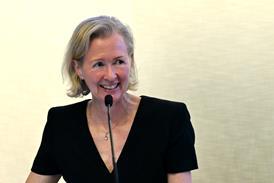Commercial cases are suffering from judgment obesity, argues David Pope, but the quality of
reasoning resides in clarity and conciseness
Has anyone else noticed that judgments in commercial cases seem to be getting longer? Take the judgment this February in Donegal International Ltd v Republic of Zambia, the proceedings brought by a 'vulture fund' to recover $42 million of sovereign debt. It ran to 134 pages.
No sooner had the Republic of Zambia digested the implications of that decision, than it received judgment in its conspiracy claim against former president, Dr Frederick Chiluba, and others (Attorney General of Zambia v Meer Care & Desai). It covered 220 pages.
A week later, Mr Justice Colman gave judgment in a claim over loans to the now-defunct Yorkshire Food Group (National Westminster Bank plc v Rabobank Nederland). It filled 157 pages.
It was not ever thus. Flick through the Queen's Bench Reports, the Chancery Division Reports and the Lloyd's Law Reports for 1967 and 1987, for example, and the longest case report that you will find (Rondel v Worsley [1967] 1 QB 443) runs to 83 pages. And it includes the judgments of both the High Court and the Court of Appeal.
So what is causing this epidemic of judgment obesity? The prime suspect is the mighty volume of paper with which judges trying modern commercial cases must grapple. The Woolf reforms have singularly failed to deliver a reduction in documentary evidence and skeleton arguments have long lost any pretence of thinness. In his judgment in Meer Care & Desai, for instance, Mr Justice Peter Smith noted plaintively that the parties' written submissions extended to more than 1,300 pages. That is just 144 shy of the number of pages in the Penguin Classics edition of War and Peace.
To do justice to this monumental pile of paper, some judges evidently feel compelled to write judgments of book-like proportions, each complete with a detailed analysis of the facts and a lengthy exegesis of the relevant law.
But is justice really being done when judges produce supersize judgments? For a start, these tomes are hardly advertisements for open and accessible justice. Who will ever wade through them except the parties' lawyers and a handful of practitioners and academics?
This opacity would be less objectionable were the only issues at stake obscure points of law. However, some of these decisions are extremely important. Meer Care & Desai involved allegations of fraud against a former head of state. The judge himself was aware of the significance of his judgment and expressed the hope that it would be circulated widely in Zambia. But how many Zambians will have the time or the perseverance to read all 1,140 paragraphs?
Then there are the legal costs that these jumbo judgments must generate. In a commercial case of any heft, each party will be represented by (at least) a partner, a mid-ranking associate and counsel. Each of them would take about six hours to read a 200-page judgment thoroughly. By my reckoning, in a three-party dispute, the combined legal bill just for reading the judgment could easily top £25,000.
Such is the nature of modern commercial litigation that judges undoubtedly face real pressure to produce prodigious judgments. But instead of succumbing to that pressure, judges would do well to take a leaf from the law reports of yesteryear. They might note, in particular, that the quality of judicial reasoning resides not in its abundance, but in its clarity and conciseness. Greater self-restraint in judgment drafting would also give added credence to the judiciary's oft-expressed commitment to lessen the costs of large-scale civil proceedings.
David Pope is a barrister and director of advocacy at City firm Denton Wilde Sapte
Charity Explorer provides a reputable reference tool for solicitors, will-writers and their clients who want to leave a legacy or charitable gift.
Visit Charity Explorer
Whether you are looking for legal expert witnesses, legal training/CPD providers, international law firms, administration of estates, legal software suppliers, barristers chambers or any other general legal service, the Legal Services Directory will provide a suitable option.
Visit Legal Services Directory

























No comments yet